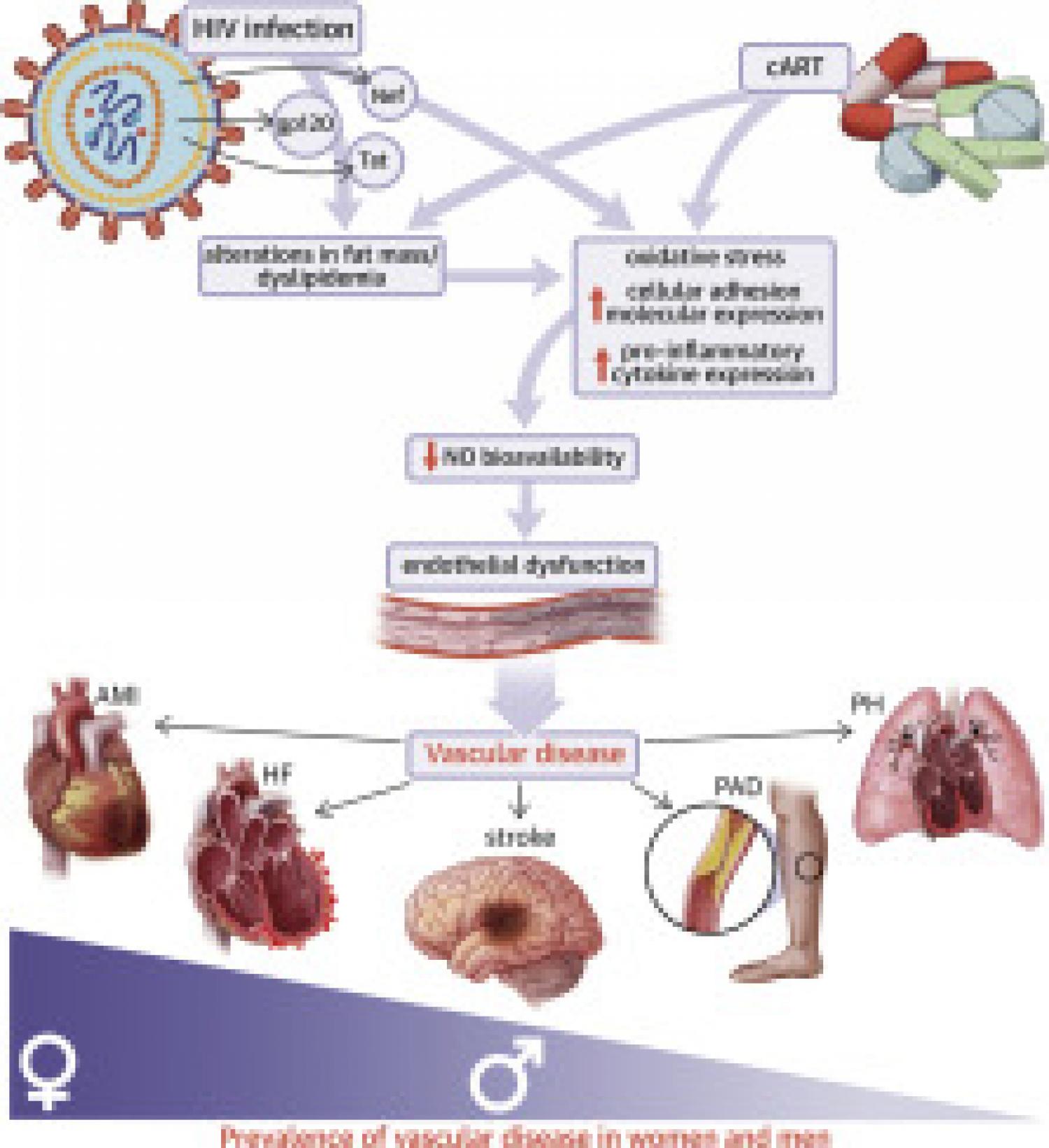
Thanks to the advent of combination antiretroviral therapy (cART), people living with human immunodeficiency virus (HIV) (PLWH) experienced a marked increase in life expectancy but are now at higher risk for cardiovascular disease (CVD), the current leading cause of death in PLWH on cART. Although HIV preponderantly affects men over women, manifestations of HIV-related CVD differ by sex with women experiencing greater risks than men. Despite extensive investigation, the etiopathology of CVD, notably the respective contribution of viral infection and cART, remain ill-defined. However, both viral infection and cART have been reported to contribute to endothelial dysfunction, the precursor and major cause of atherosclerosis-associated CVD, through mechanisms involving endothelial cell activation, inflammation, and oxidative stress, all leading to reduced nitric oxide bioavailability. Therefore, preserving endothelial function in PLWH on cART should be a main target to reduce CVD morbidity and mortality, notably in females.
